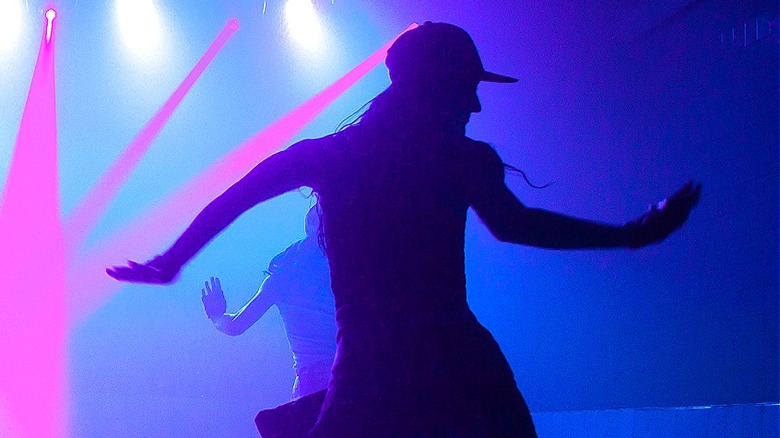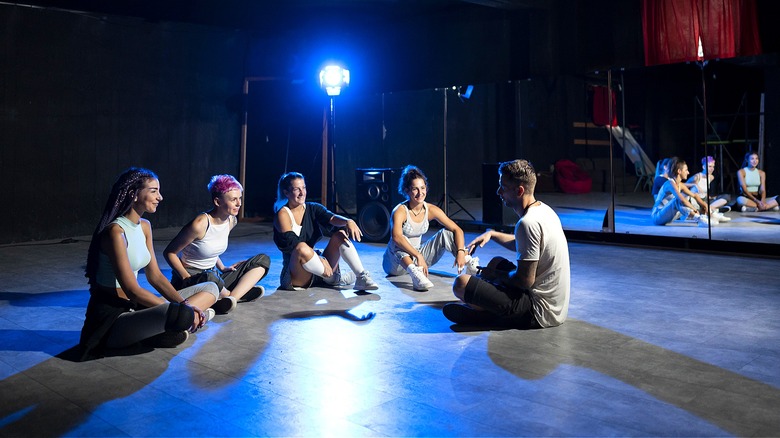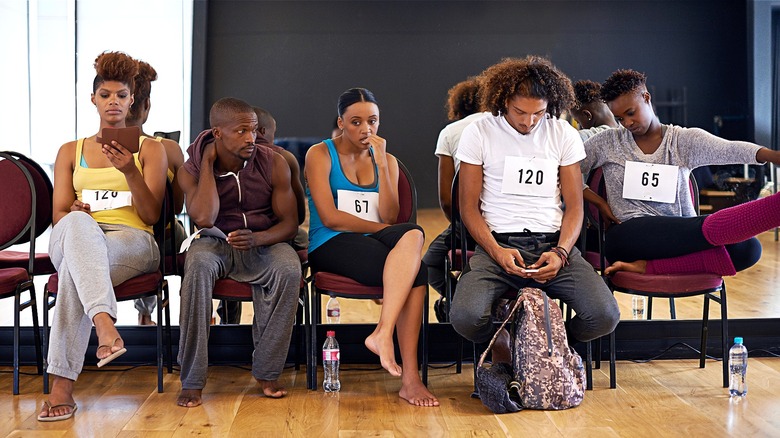How Much Money Do Backup Dancers Make On Tour?
Dancing, a performative art form, is a career people spend years training for. To become a dancer, you need creativity and athleticism, persistence, stamina, coordination, and teamwork. Career paths for dancers include instructor, choreographer, and, in today's digital world, content creator. Another path someone might pursue as a dancer, though, is that of a backup dancer, one who works concerts, tours, music videos, and special events, such as awards shows. On average, dancers earn $21.64 an hour, according to the United States Bureau of Labor Statistics; however, pay for these professionals varies depending on location, dance style, and project. For music tours and concerts, the West Coast offers more opportunities to pursue. For a backup dancer who earns a spot on an artist's tour, pay is broken down according to rehearsal and show pay, plus arrangements for travel, accommodations, and food.
The Berklee College of Music says that to become a professional backup dancer, a person should learn four dance styles — ballet, hip-hop, jazz, and modern — as well as consider adding something special to one's repertoire in order to stand out. The Bureau of Labor Statistics estimates there are 18,400 dancers and choreographers in the United States and projects the profession to grow by 5% between 2022 and 2023, a pace faster than the national average (at 3%). The statistics bureau says growth for dancers over the next decade could be tied to social media.
Opportunities depend on location
According to the Bureau of Labor Statistics, dancers, on average, earn an hourly pay close to the national average for all occupations: $21.64 versus $22.26. The difference in median pay is about 3%. This said, the statistics bureau notes that dancers in the 10th percentile earn $13.20 per hour, which is 42% less. Dancers in the 90th percentile take home $39.03 per hour, or 43% more than the national average. This median high is close to the highest wage reported by ZipRecruiter, which reports that backup dancers in Ventura, California, earn an hourly wage of $33.14.
Per the platform More Than Dancers, though, tour backup dancers are typically paid by rehearsal hours ($250 per day for eight hours, $175 per day for four hours) and then a flat rate per show: $500. In addition, dancers will have their travel and accommodations covered by the tour, plus be given a stipend for food each day ($35). Note that big artists who tour can tour for a year (or more).
Location is a major factor when it comes to how much a backup dancer can earn and the sort of opportunities available. As said, for concerts and tours, the West Coast — specifically the city of Los Angeles — is a dancer's better bet. Speaking to Backstage, Victor Rojas, an LA-based professional dancer who's toured with musicians like Janet Jackson and the Spice Girls, said that when it comes to opportunities, the "dance worlds" found on the two coasts are very different. "In the East, it's very Broadway-based and dance company–oriented, whereas in LA, it's very commercial and mainly about tours and videos," he said.
Dance is a super-competitive field
In his interview with Backstage, Victor Rojas explained that being a backup dancer is exciting, especially when you get to go on tour with big artists. "But as one of the dancers, you really get a sense of what it's like to have that kind of notoriety [of a star] without having all the responsibility that goes with it," he said. "You perform in front of really big audiences, and there's all that energy. And I love the immediate response you get from the crowd." But with this said, getting on a tour or concert as a backup dancer is difficult work to get. Said Rojas, "The last audition I went to in LA, there were a thousand dancers auditioning for a spot that only required four boys and four girls."
As the Berklee College of Music notes, the only way to get hired as a backup dancer is to audition, which can either be open (such as the kind Rojas described above) or closed, where it's only open to invited dancers. The private music school further explained auditions can last for three days straight, and each day, a dancer must be ready 10 hours a day to perform when called. Consider that in Rojas' example, only eight people were going to be hired out of 1,000; that's a 0.8% chance of getting the job.


